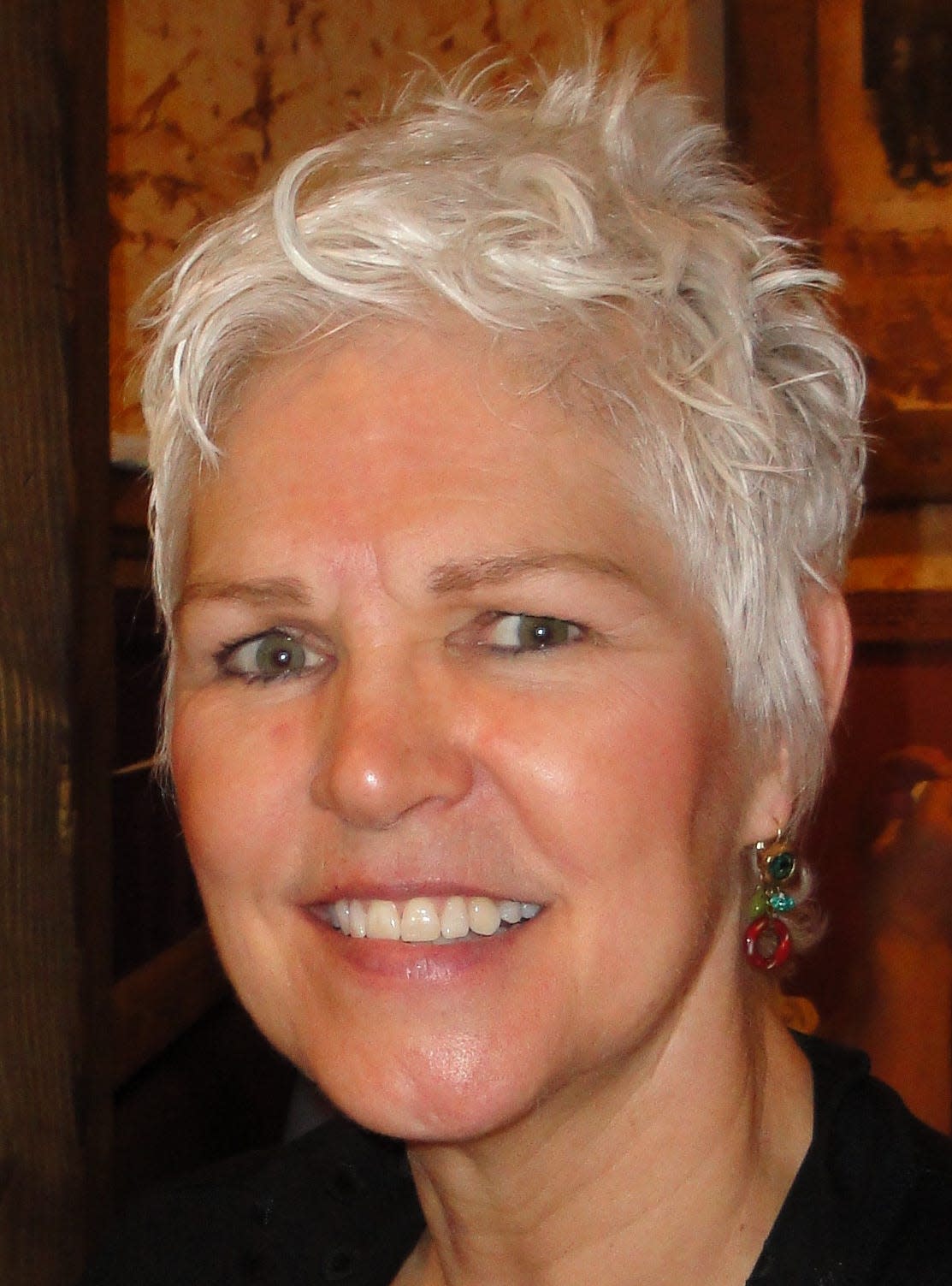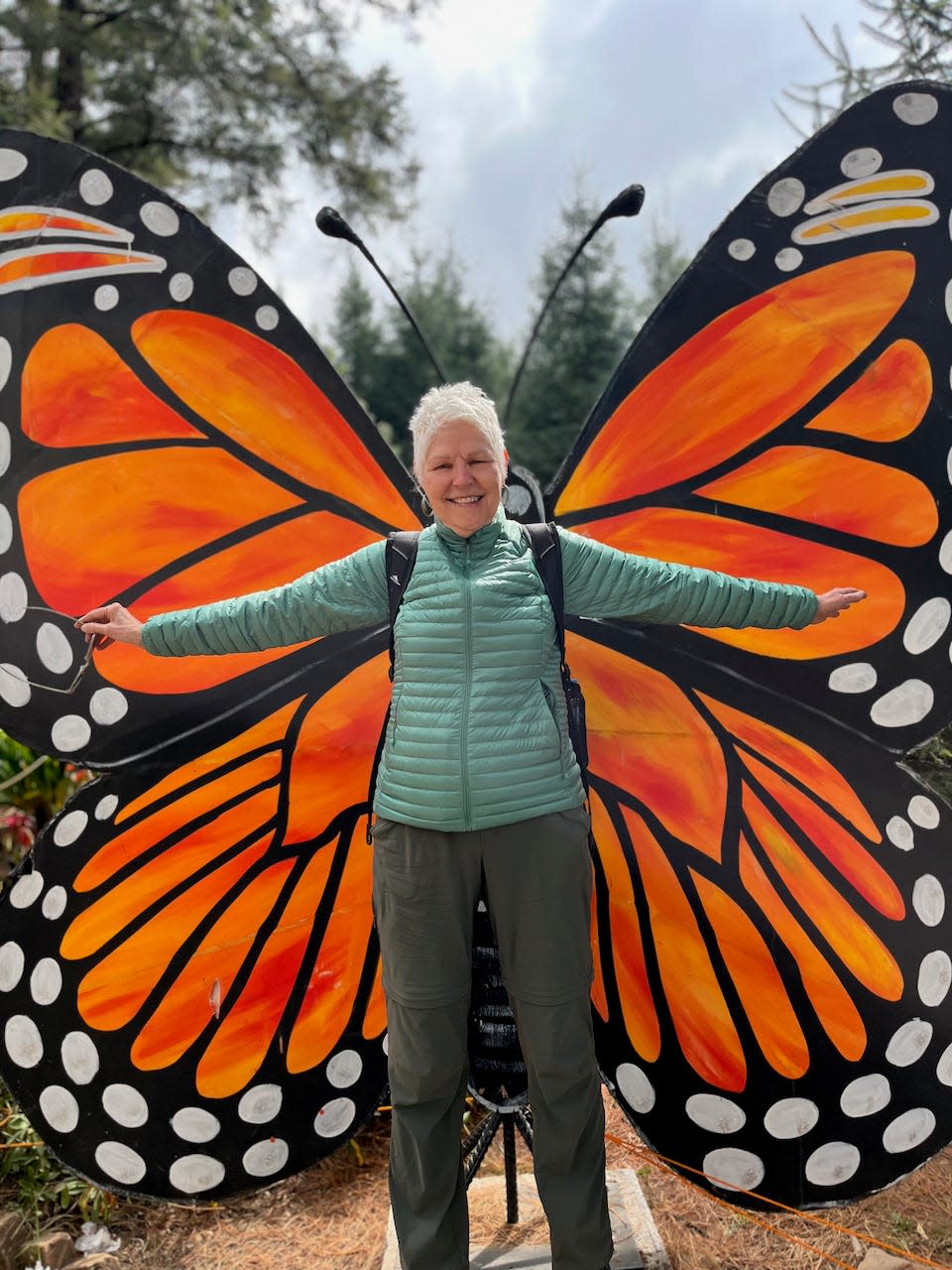Opinion: Get ready: Hummingbirds and monarchs are coming to Western North Carolina

Ruby-throated hummingbirds are racing to Western North Carolina from their overwintering homes in Central America or southern Mexico. Some fly from Costa Rica to Canada. Thousands of miles, 500 of them over the open waters of the Gulf of Mexico. They are tiny birds weighing 3-4 grams (about the weight of a penny) and flap their wings more than 50 times per second. On land, they have to consume about 50% of their body weight each day in carbohydrates — nectar — to fuel that manic activity. For their fat and protein, they eat spiders and tiny insects.
Having co-evolved with hummingbirds, many long and tubular flowers have craftily positioned their pollen-filled anthers (the flower’s male part), near the top of the flower so the hummingbird’s forehead will brush up against them as the bird is extending its long tongue down into the flower’s deep nectary, constantly in motion while flapping its wings. During this feeding frenzy, the pollen on its forehead brushes onto the stigmas (the flower’s female part) of subsequent flowers. Pollination accomplished!
If you want to witness their antics, you can stock your hummingbird feeder, but better yet, why not skip the fast food and plant the flowers they prefer for a nutritious meal? Asheville GreenWorks’ Bee City USA program has produced such a plant list and it can be downloaded from GreenWorks’ website in the “Native Pollinators” section. Complete with a “Natural Hummingbird Feeders” page, this list of 282 perennials, shrubs, vines, bunch grasses and trees native to WNC was updated by local experts in 2021.
You’re thinking the flowers must be red, right? But hummingbirds tastes extend to all colors, so long as the flower is tubular and loaded with nectar. Some of the more familiar native plants they prefer are coral honeysuckle, cardinal flower and scarlet bee balm, but they also love jewelweed, larkspur, bleeding heart, tulip tree and others. The exciting thing is that once a hummingbird discovers a good feeding site, they may return year after year. With an average life span of 3-5 years, some have lived as long as 10 years. If you choose a variety of plants that bloom in spring, summer and fall, you could view hummingbirds March-November, along with a variety of other pollinators.
More: Opinion: Spring in Asheville time to reflect on plants: 'Amazing time to be a botanist'
More: Opinion: Create Craggy — Now is time to designate NC's 1st national scenic area
More: Opinion: 18-year-olds to Chuck Edwards: We demand action on climate change, gun violence
You can monitor the progress of hummingbirds' migration along with other migrators, like the Monarch butterfly, online at Journey North. The Monarch butterfly does not fly over open waters. In the eastern U.S. they return from southern Mexico via Texas.
As recently as 2018, when I scouted Asheville’s Montford neighborhood for gardens to feature in a garden tour, I couldn’t find a single milkweed plant — the only plant genus Monarchs will lay eggs on. Happily, more and more gardeners are planting milkweed to offer Monarch butterflies a host plant for their eggs. Monarchs prefer young, tender milkweed plants that grow and keep up with their caterpillars’ voracious appetites. That’s why they continue migrating northward to Canada — following the emergence of milkweed plants.
While Monarch caterpillars eat milkweed exclusively as their baby food, as adult butterflies, they want adult food — nectar! We are lucky to have local suppliers of plants native to WNC that provide the nectar adult butterflies crave. Many of them grow plants from seed, some collect their own ecotypic seeds in the wild, and all of them use pollinator-friendly pest management practices.

More: Opinion: Let's talk about it: The power of Asheville, WNC stories in a climate crisis
Carolina Native Nursery, Reems Creek Nursery, Sandy Mush Herb Nursery and Painters Greenhouse have been anchors for selling native plants in our region for decades. More recently, they have been joined by Red Root Natives, Big Pine Natives, Woodswise Botanicals, Natural Selections Nursery, Wildbud Natives, M R Gardens and Saturnia Farm. All are included in GreenWorks’ plant list and most carry at least one locally native milkweed species — common, butterfly, swamp, whorled or poke.
Pollinators are crucial to the reproduction of nearly 90% of the world’s flowering plants, essential to sustaining ecosystems. Those plants feed and provide nesting sites and shelter for wildlife and humans. For most birds, pollinators themselves are food! Sadly, 40% of the world’s pollinating insects are at risk of extinction. When you plant even a few native plants, you’re helping reverse pollinator declines.
Phyllis Stiles is founder and director emerita of Bee City USA, birthed in Asheville in 2012 and merged with the Xerces Society for Invertebrate Conservation in 2018. She is also a Board Member of Asheville GreenWorks. There are currently more than 330 Bee City USA and Bee Campus USA affiliates in 46 states.
This article originally appeared on Asheville Citizen Times: Opinion: Get ready: The hummingbirds and monarchs are coming!

